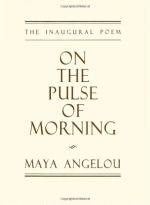|
This section contains 307 words (approx. 1 page at 400 words per page) |

|
On the Pulse of Morning Summary & Study Guide Description
On the Pulse of Morning Summary & Study Guide includes comprehensive information and analysis to help you understand the book. This study guide contains the following sections:
This detailed literature summary also contains Quotes and a Free Quiz on On the Pulse of Morning by Maya Angelou.
The version of this poem used to create this study guide appears in: Angelou, Maya. On the Pulse of Morning. Random House, 1993.
Note that parenthetical citations within the guide refer to the lines of the poem from which the quotations are taken.
“On the Pulse of Morning” is a 107-line free verse poem written and performed by American poet Maya Angelou for the inauguration of President Bill Clinton in 1993. Angelou was only the second poet featured in a U.S. presidential inauguration, and the first woman and Black American to have the honor after Robert Frost at John F. Kennedy's inauguration in 1961. Considered a “public poem,” Angelou received high praise for her reading at the inaugural ceremony. Though critics have given mixed reviews of the written poem, it nevertheless ranks as one of Angelou’s best-known and most-beloved works for its inclusiveness, environmental themes, and hopeful tone.
The poem begins with a rock, a river, and a tree, each of whom addresses humankind with both reflections on the past and messages for the future. The rock asks that we not stand beneath it to hide our mistreatment of others, but rather stand upon it to face the future. The river refers to the environmental degradation caused by destructive human actions like war and pollution and offers a peaceful place to rest for those who refrain from violence. The tree speaks to people of all different backgrounds, contemplating the bloody history of a land marked by indigenous genocide and human enslavement but ultimately offering a message of hope for a new dawn, as long as this history is not erased. Together the rock, river, and tree call on humankind to dream as a new day rises, that we may embrace the morning with greater care for our environment and for our brothers and sisters.
Read more from the Study Guide
|
This section contains 307 words (approx. 1 page at 400 words per page) |

|



